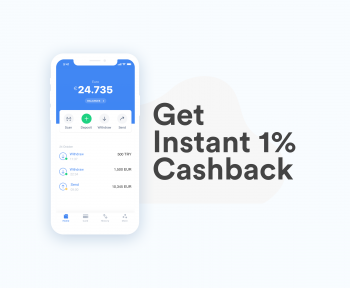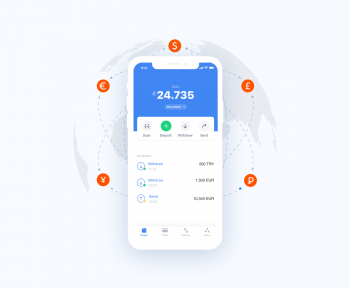The centralized exchange (CEX) and the decentralized exchange (DEX) are the two main types of trading platforms. Centralized platforms still do most of the trading, but decentralized ones are getting more popular because they focus on user control, security, and openness.
Anyone who wants to get around in the crypto exchange space needs to know how these models are different from each other. The growth of these platforms shows the ongoing battle between convenience and independence, which is affecting the entire digital asset market.
The ongoing centralized vs decentralized crypto exchanges debate is another reason to look into decentralized systems. The rise of decentralized crypto exchanges is changing the way trading will work in the future, even though each has its own pros and cons.
Centralized platforms usually offer speed and liquidity, while decentralized exchanges offer privacy, user custody, and resilience. Traders are becoming more aware of the risks of centralized custody, especially since there have been a number of high-profile failures in the industry.
Join us in this blog as we go further into detail on decentralized exchanges, such as how they work, their benefits, their types, the key differences between centralized and decentralized exchanges, how to use them, and more. Let’s start by understanding how they work!
How Does a DEX Work?
The following explains how a decentralized exchange (DEX) works:
- A decentralized exchange lets users trade cryptocurrencies directly with each other, without the need for middlemen. Instead of a central authority holding funds, trades are made using smart contracts on the blockchain.
- Users keep their digital assets safe because of this setup, which makes it less likely that fraud or hacking will happen on centralized platforms. The blockchain itself checks transactions, which makes things more open and stops people from changing them.
- Because it is peer-to-peer, there are no geographical limits, so anyone with an internet connection can take part in international markets. DEXs don’t usually use centralized order management. Instead, they use algorithms to connect buyers and sellers.
- Distributed order books or liquidity pools make it easier to match orders. Transactions are written straight to the blockchain, which means they can be settled right away or almost right away. This makes sure that a trade can’t be changed or undone after it has been made.
- Traders who value security and independence often find DEXs appealing for these reasons. The ability to directly interact with protocols and manage their private keys is one of the best things about decentralized systems for many people.
- The benefit is having control. With a decentralized crypto exchange, traders can keep their assets while still benefiting from the security of blockchain-based settlement. They stay away from the risks of putting their assets in centralized custodians, which have been the target of hacks in the past.
Jeton helps to keep this control by offering safe digital wallets and payment options that work with blockchain technology.
What Are the Benefits of Decentralized Exchanges?
The following explains the benefits of decentralized exchanges:
- The three main benefits of a DEX are safety, privacy, and openness. Because there is no central authority over the exchange, users don’t have to rely on a business to keep their money safe.
- It is possible to trade around the world, often without having to go through normal identification steps. DEXs also make it less likely that a single point of failure will cause a shutdown.
- In countries with strict rules or limited access to banks, DEXs provide a different way to get involved in finance. They help make finance more democratic by making sure that services that were only available in developed markets are now available to everyone.
- Another benefit is that it encourages new ideas. Many DEXs come with advanced features like yield farming, staking, and governance tools. Users can make money while also having a say in how protocols work. In centralized systems, only corporate executives can make decisions. This is different from the community-driven model.
- The decentralized governance of DEXs makes users feel like they own the platform because communities can vote on changes and updates. With a centralized exchange, a third party manages user data and funds.
- With a DEX, traders have more freedom. They show how decentralized cryptocurrencies are by giving people freedom and openness. This independence can give businesses strategic advantages because it makes them less reliant on central middlemen.
People can keep control of their money with reliable payment services that let users move between traditional and digital assets without any problems.
What Are the Types of Decentralized Exchange?
Each of the types of decentralized exchanges’ different ways of matching trades and providing liquidity is unique. There are two main types of DEXs: order book-based DEXs and automated market makers (AMMs).
There are also hybrid models that are starting to show up. These models combine off-chain efficiency with on-chain transparency to give balanced performance.
You can check out “On-Chain and Off-Chain Transactions Guide” to learn more details.
These changing structures show how creative blockchain developers are. They are always trying out new ways to make things more efficient and enjoyable for users.

Automated Market Makers (AMMs)
Automated market makers are the most common type of DEX these days. Instead of regular order books, there are liquidity pools where users put tokens that other users can trade against. Prices are set by algorithms that look at supply and demand.
This system makes sure that there is always money available without the need for a central middleman. PancakeSwap and Uniswap are two well-known AMM-based platforms that have shown that this model works to attract users and liquidity providers.
Liquidity pools also encourage people to work together because anyone can add crypto tokens and get rewards that are fair to everyone. AMMs let anyone become a liquidity provider and make money by charging fees. This creates chances for passive income. This model works well with blockchain technology because it is decentralized.
It also makes liquidity more accessible to everyone, allowing even small investors to take part and get lower fees. AMMs make it easier to trade and lower the barriers to entry for people who are new to the world of cryptocurrencies. They also encourage people to try out new financial models like crypto derivatives and synthetic assets.
Order Book DEXs
Order book DEXs work more like regular exchanges. They show buy and sell orders so that traders can trade at the prices they want. But these order books work directly on the blockchain, unlike CEX, or they use a mix of on-chain and off-chain components to make things go faster.
Some platforms use off-chain order matching and on-chain settlement together to find a good balance between performance and transparency. This combination gives users the speed of centralized infrastructure and the reliability of blockchain-backed settlement.
This format will be easier for traders who are used to centralized platforms to use, but they will still get the benefits of decentralization. Book of orders Professional traders who value accuracy in executing trades often use DEXs.
Investors can pick the types of decentralized exchanges that work best with their strategies by knowing both models. Traders can make the most of their experience by choosing what matters most to them: speed, control, or efficiency.
On-Chain Order Books
On-chain order books keep track of every order right on the blockchain. This method is the most open because everyone can see all buy and sell orders. But because of the limits of blockchain, it can also make transactions take longer and cost more.
Every change or cancellation of an order is recorded on-chain, which could raise gas prices and slow down operations during times of high demand. On-chain order books are appealing to traders who value transparency above all else because they guarantee that data integrity is never compromised, even with these problems.
The good thing is that it’s clear. Traders can check that the market is fair and do a full audit of the order flow. There is less chance of manipulation with a centralized exchange because no one person or group controls the books. But many on-chain models still have trouble scaling, which is the trade-off.
To help ease traffic, developers are working on scalable solutions like layer-two technologies. Value is added by giving users safe off-chain payment options that work well with on-chain trading and provide great freedom. This ensures that moving money between fiat currency and cryptocurrency is easy and secure, even when on-chain execution takes longer.
Off-Chain Order Books
Final settlement happens on the blockchain, but buy and sell orders are handled by off-chain order books on external servers. This hybrid model keeps the security of completed trades on the blockchain while making things faster and cheaper.
When execution and settlement are kept separate, traders get the benefits of decentralized validation and better performance. Off-chain systems are better for high-frequency trading, where speed is very important.
The benefit is efficiency. Traders get faster execution with this system than with strictly on-chain systems, without losing the benefits of decentralization. Off-chain order books are very popular with professional traders who need little slippage and quick execution. They often come with advanced trading tools that keep blockchain-based settlement while acting like centralized platforms.
Jeton makes it easy for users to make payments across different types of decentralized exchanges, giving them the freedom to switch between fiat and digital assets. This lets businesses and people use hybrid trading models without worrying about payment delays and other problems.

DEX Aggregators
This text explains what DEX aggregators are and outlines their benefits:
- DEX aggregators get liquidity from a number of decentralized exchanges. They send trades through networks and look at prices to get the best execution. This means that users don’t have to check multiple platforms by hand, and they will always get the best rates.
- These platforms solve one of the biggest problems with decentralized markets, fragmentation, by bringing together liquidity. Aggregators also improve the user experience by making it easier for beginners to trade across ecosystems with simple interfaces.
- DEX aggregators make it easier to get liquidity, which makes trading more efficient for users. They protect traders from having to pay high fees or getting bad execution because one platform doesn’t have enough liquidity.
- Aggregators also encourage DEXs to compete with each other, which lowers costs and encourages new price models. Unlike a centralized exchange, which focuses on liquidity, aggregators bring together different markets and make them more efficient.
This optimization is enhanced by making it easier for traders to move their money between markets safely. Users can quickly transfer funds to different exchanges or aggregators, ensuring that no opportunities are missed.
Decentralized Exchanges vs. Centralized Exchanges
The following explains the comparison between centralized and decentralized crypto exchanges:
- The centralized vs decentralized crypto exchanges comparison shows what each one is good at and what it’s bad at. A CEX gives users a lot of liquidity, speed, and easy-to-use interfaces.
However, users lose control over their assets and are at risk on the platform level. A DEX may not be as easy to use or as liquid as a big centralized platform, but it puts more emphasis on privacy, self-custody, and resistance to censorship. The cryptocurrency industry is changing right now, and users have to choose between convenience and sovereignty. - You can choose the model that best fits your needs. Some people like how independent a decentralized crypto exchange is, while others think that a centralized exchange’s reliability is very important for trading a lot.
- Many traders choose to use both types of exchanges, with DEXs for privacy and control and CEXs for speed and liquidity, depending on the situation. With this mixed strategy, they can get the best of both worlds: control and ease of use.
How to Use Decentralized Exchanges?
To use decentralized exchanges, users usually connect a cryptocurrency wallet to the platform. After they pick the tokens they want to trade and confirm the swap, a smart contract is used to make the trade happen.
There is no one person or organization that holds the funds, so traders have full control and ownership. Users must also understand confirmation and be able to control gas fees because transactions happen directly on the blockchain. This might scare off new people because it requires a certain level of technical knowledge.
As time goes on, participants’ financial literacy improves, which is good for the ecosystem as a whole. The autonomy principle is the same for types of decentralized exchanges, even though the mechanics are different.
Wrapping Up
As decentralized trading platforms grow, global cryptocurrency investors now have to deal with both new chances and problems. A decentralized exchange (DEX) lets people control their money, while a centralized exchange (CEX) has middlemen hold assets.
As the debate over centralized vs decentralized crypto exchanges heats up, it is important for traders to understand complex DEX models. These platforms are part of a bigger shift in how value is traded and managed in digital economies, not just simple trading tools.
As decentralized exchanges continue to redefine global trading, the need for reliable, flexible, and secure payment solutions grows stronger. While DEXs empower users with full control over their assets, bridging the gap between decentralized finance and real-world payments is where Jeton comes in.
Jeton is a great digital platform that helps a lot by making sure that digital markets and fiat currency can connect safely. This makes it easier for people to participate in both centralized and decentralized ecosystems.
- With Jeton Wallet, you can easily manage your funds, whether you’re trading crypto or making everyday purchases.
- Jeton Card takes that freedom one step further — allowing you to spend globally in multiple currencies, online or in-store, with the same confidence and convenience.
- Through the Jeton app, you’ll have one app for all needs — secure transactions, instant currency exchange, and effortless global payments right at your fingertips.
Trade freely, spend seamlessly, and stay in control — just like a decentralized world intends. Get your Jeton Card today and download the Jeton app via App Store or Google Play to experience smarter, borderless payments. Sign up to a single account for all your payments!



